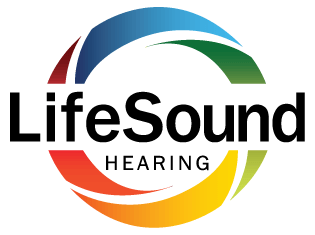
Most people think that as they age hearing loss will be inevitable. In truth, damage from recurring exposure to loud noise is also a major factor. Each exposure to loud sounds, whether at a concert, mowing the lawn, or through loud earbuds, accumulates over time, leading to permanent hearing loss. Perilously, this issue isn’t confined to older adults; even children are now showing signs of preventable hearing damage.
Around 34 million children around the world are experiencing hearing loss, and up to 60% of these cases are preventable. The number of cases in adults is even more alarming and seriously needs to be addressed.
Understanding current factors contributing to hearing loss
Understanding today’s factors that play a role in hearing loss is important in determining why it has become so much more prevalent. All of the different factors that are contributing to hearing damage work together in an interrelated way that increases the risks:
- Technological Advancements: Perhaps the most significant factor in the increase of hearing loss is the popular use of personal audio devices. Earbuds and headphones have made it easier than ever to listen to music, podcasts, and videos. However, the closeness of these devices to the ear, coupled with the propensity to boost the volume, can cause significant harm. This type of damage builds-up progressively frequently going undetected until it begins to become noticeable and irreversible.
- Population Density in Cities: The world’s cities are more densely populated than they ever were. With more people living close together, the noise levels in metropolitan environments have increased significantly. This elevated city noise, from traffic to construction, has a big impact on the soaring incidence of hearing loss.
- Social Environments: Modern social environments, including restaurants and bars, are often excessively loud. Lots of social establishments have implemented the tactic of boosting their volume levels to give the impression of increased success. Cumulative hearing damage can be the consequence of the background noise in these places, even if there is no live music.
From raging waterfalls to clattering steam engines, humans have always had to deal with loud noises, but in the modern world, new challenges have arisen. Today’s noise levels, together with the accessibility of technology, create a perfect storm for hearing loss.
Prevent hearing loss – practical steps
Why hearing loss remains such a widespread problem is somewhat a mystery considering how preventable most forms are, especially in children. The key to prevention lies in personal responsibility and awareness. Here are a few practical strategies to help preserve optimal hearing health:
- Monitor Your Earbud Volume: Personal audio devices, including earbuds, are a convenient way to enjoy music and other audio content, but they present a substantial risk if used irresponsibly. Many devices allow you to set a maximum volume limit, which can help protect against unintentional exposure to dangerous sound levels. Long-term damage can be avoided by taking some time to adjust these settings.
- Use Ear Protection: If you’re planning to be in a loud setting, such as a concert, or while operating noisy machinery such as a lawnmower, using hearing protection is crucial. Earplugs and earmuffs are widely available and can substantially reduce the risk of hearing damage. This basic step is often neglected but can make a significant difference in preserving your hearing.
- Be Careful About Moderate Noise Exposure: While loud noises are the most evident hazard to hearing, prolonged exposure to moderate noise can be equally damaging. As an example, over time, city noise can result in damage even if it doesn’t seem that loud. You’re only likely to follow through with preventive steps if you understand the cumulative nature of hearing loss.
- Leverage Technology for Hearing Protection: You can monitor whether your environment is getting too loud by downloading an app that keeps track of outside volume. These tools are indispensable for increasing awareness and making informed choices about your surroundings.
The impact of knowledge in hearing protection
It’s more difficult for someone to protect their hearing when they work in a noisy setting such as a stadium or a manufacturing facility. However, strict occupational safety regulations are in place to safeguard workers’ hearing health. Work-related hearing loss can be prevented by becoming familiar with these regulations and putting them into practice.
You will ultimately be better able to protect your hearing by being more informed. Your knowledge base should include knowing your environment, workplace policies, and willingness to seek advice from a hearing specialist if needed.
Consulting with us can supply useful insights into your current hearing health and offer individualized recommendations for protecting your ears. Bear in mind, hearing loss isn’t an inescapable fate. With the right precautions and awareness, you can preserve your hearing health and enjoy the sounds of life for years to come.
[blogcta]
